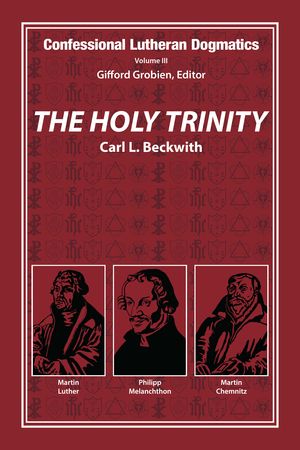
There’s an ancient rule for talking about the triune God’s action in the world: the outward works of the Trinity are undivided (opera Trinitatis ad extra indivisa sunt). It’s an important guideline that delivers you from thinking about three divine agents doing different things, which would be an odd thing for a monotheist to think. I wrote a little bit about it recently here.
It’s frequently called an Augustinian rule, though it was around before him (it’s a basic plank of pro-Nicene interpretation) and was classically formulated after him (by medieval scholastics). You sometimes see it cited with a little additional clause: Opera trinitatis ad extra sunt indivisa, scilicet servata cuiusque personae proprietate; that is, “the works of the Trinity ad extra are undivided, preserving, of course, the properties of each person.”
That little addition makes a big difference: It reminds the users of this Augustinian rule that they should stay alert to how the eternal distinctions that mark Father, Son, and Spirit in God’s inner life can also be seen or understood in their temporal actions somehow. The persons are distinguishable in their outward actions in a way that corresponds to their distinctions in their eternal relations.
But where did this little servata addition come from? Why does it only accompany the Augustinian rule sometimes?
In Carl Beckwith’s new book The Holy Trinity (Confessional Lutheran Dogmatics, vol. III), he traces it to the Patristics-loving Lutheran dogmaticians of the sixteenth century. Early in his discussion of the Trinity’s external works, he says
The distinguishing characteristics or personal properties of Father, Son, and Holy Spirit permit the reader of Scripture to see both mutuality and distinction in the actions of the Trinity toward creation. On this very point our Lutheran dogmaticians correct a potential misunderstanding of Augustine’s rule, as formulated by the medieval schoolmen, and bring to bear the personal properties and order of the divine persons on thee external works. (311)
A dozen pages later, Beckwith specifies what he means by claiming that the Lutherans were engaged in “correcting.” “The Fathers and particularly Augustine had more to say than what the rule says,” and the Lutherans followed Luther in “altering the scholastic rule attributed to Augustine. This begins with Melanchthon but becomes explicit with Chemnitz and Quenstedt among others.”
So when Melanchthon has argued that salvation is an external work of God and is therefore the work of the entire Trinity, he makes the addition: “The works of the Trinity ad extra are undivided, preserving, of course, the properties of each person.” Beckwith explains:
Yes, the work of salvation is common to the Trinity as the rule itself states. But more needs to be said than this. Our understanding of that common work may not blur the distinction of persons, their unique personal properties, nor the order of the Trinity. In other words, we must not reduce the common work of the Trinity to their common essence and simply say these acts or these works are accomplished by the divine nature. There is only ever Father, Son, and Holy Spirit who act inseparably and equally by the common power of their nature. There is no common nature that acts apart form the divine persons. (328)
Beckwith also provides some crucial commentary on the way the incarnate Son works: not from himself but from the Father, echoing in his historical actions his eternal way of being. But I skip this fine section to pursue a mostly bibliographical point: Melanchthon, working from a thickly patristic matrix, is the one who apparently formulates the servata addition. Martin Chemnitz transmits it, and Johann Andreas Quenstedt apparently makes it more widely available. Herman Bavinck, for instance, uses it (RD 2:318), as does Emil Brunner (where I first encountered it, Dogmatics 1:234), using Quenstedt’s language (though thinking it’s from Luthardt; it’s complicated. See the long footnote on Beckwith p. 332).
As Beckwith notes at the end of this section, “the Lutheran addendum has now become part of the common theological rule.” And as I mentioned above, the main reason to call this addendum “Lutheran” at all is a bibliographical one, not a substantive one. The Lutherans were not correcting Augustine; only correcting certain misinterpretations of common doctrine, and safeguarding against future deviations. Credit where credit is due for these Lutheran dogmaticians who formulated this very important principle, and to Beckwith for tracing its origins. Yay team Luther! But, as Beckwith reminds us via a quotation in the first lines of his preface, “There is, thank God, no specific Lutheran doctrine on the Trinity.”